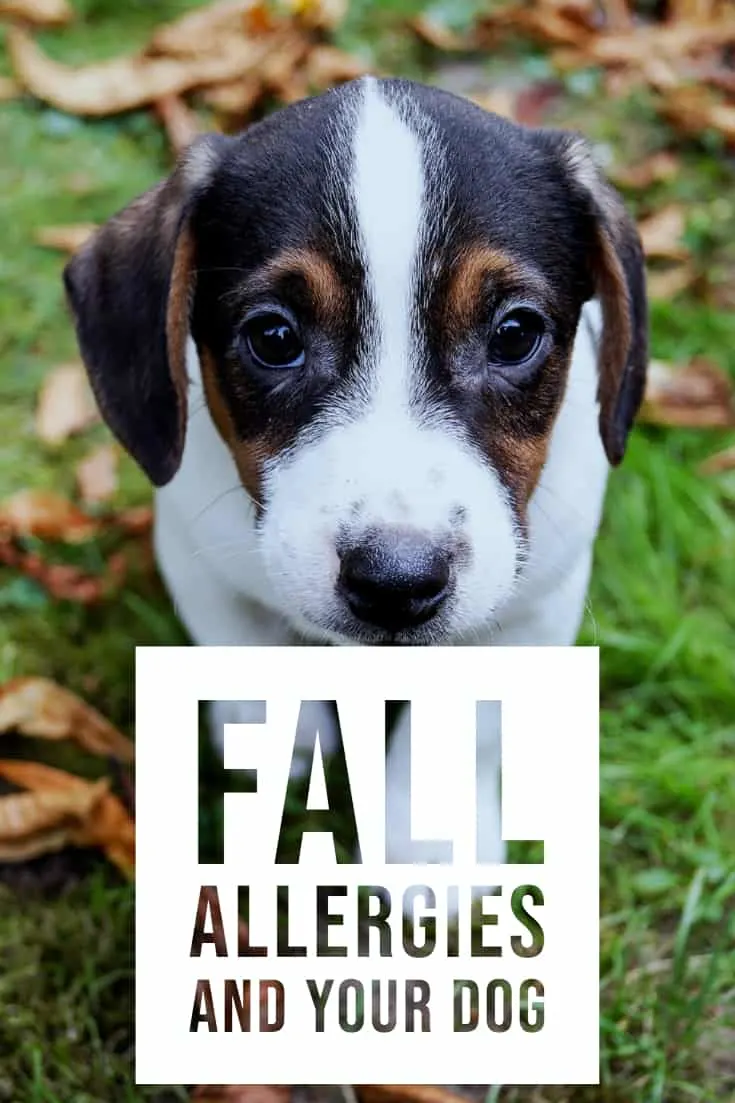Along with crisp morning walks and beautiful backdrops for your dog outings, is autumn also synonymous with a sudden increase in the amount of scratching your dog is doing? Fall is definitely one of our favorite times for dog walking and hikes–but there’s no denying that it’s also a time when allergies can flare up. If your dog is exhibiting signs of allergies, it could be related to the change of seasons. Dr. Jeff Werber discusses dog fall allergies–and what you can do to help!

Fall Allergies for Dogs
So, with summer coming to an end, and the weather cooling down, I’m sure many of you are hoping that your pets will be finally getting that break from those spring and summer allergies.
Well, not so fast!
True, as the weather cools and the humidity drops, we may see a slight break in the flea load, but the pollen and weed count often stays high during at least the early fall.
Allergic Dogs and Atopic Dermatitis
Winds pick up, leaves and flowers begin to fall, and with that pollens start flying. As pollens from weeds, trees, and grasses increase, so does the incidence of atopic dermatitis in our allergic pets.
Unlike people, who suffer from “hay fever,” with respiratory symptoms of inhaled allergies, our dogs and cats manifest these same allergies via skin problems, called “atopic dermatitis.”
These afflicted dogs and cats will scratch vigorously often causing a secondary skin infection called “pyoderma.” Dogs often will exhibit these signs of allergy with a rash and itching on their abdomen and inside of their thighs. Occasionally, this rash can extend to their lower backs as well.
Cats, on the other hand, didn’t read the same “allergy book,” and can exhibit their allergy symptoms almost anywhere on their bodies.
These affected dogs and cats will often scratch incessantly and are very uncomfortable. If not treated, the self-trauma from this vigorous scratching can cause problems worse than the initial allergy symptoms!
Can fall allergies in dogs be prevented?
Can this be treated? Prevented?
One not-so-simple or practical solution would be to put your pets into a plastic bubble complete with a heavy-duty Hepa filter! Well, that’s not going to happen!
Alternatively, depending on the severity and frequency of symptoms, the allergies can be treated symptomatically, meaning that the allergic flare-ups, and secondary skin infections, can be treated with medications, bathing, skin supplements with Omega 3 fatty acids, and, to help control the pet’s anxiety from the discomfort, with natural calming supplements.

Antihistamines, like diphenhydramine, though not always effective in controlling all the allergic symptoms, will help a little, and will often induce a mild sedation, which can “take the edge off.”
Medications, like antibiotics and corticosteroids will obviously need to be prescribed by your veterinarian, but many of these other products are available at retailers and pet stores.
For instance, Pro Sense Pet Care offers Allergy Relief Tabs that helps reduce itching caused by allergies and other minor skin irritations, while also soothing itchy, watery eyes.
Another, more long term solution, would be to build up a pet’s own immune system specifically against the offending allergens.
This is the process by which people have been treated for years—getting “allergy tested,” then based on those results desensitizing the patient, via “allergy shots,” to build up their immunity specifically to the agents that patient was sensitive to.
In Veterinary Medicine we can test for specific allergens, either by skin-scratch testing (as often done with us) or by blood testing, which is becoming increasingly popular.
Once diagnosed, allergy injections, or now even sublingual drops, can be administered on a scheduled basis to slowly build up the patient’s immunity to those specific antigens.
This technique, though the industry standard, is not 100% effective, and is, of course, more expensive in the short run, but may be more cost effective in the long run when compared to years of symptomatic relief therapy.
Certainly, if you need help deciding what might be best for your pet or your situation, or have any questions about pet allergies, don’t hesitate to contact your veterinarian.
For more information about pet allergies and what your can do at home to help your pets, visit prosensepet.com.
![]() About the Author: To learn more about Dr. Jeff, visit www.drjeff.com and www.prosensepet.com. Follow along with what’s new with Dr. Jeff on his Facebook page and @drwerber Twitter account, too!
About the Author: To learn more about Dr. Jeff, visit www.drjeff.com and www.prosensepet.com. Follow along with what’s new with Dr. Jeff on his Facebook page and @drwerber Twitter account, too!
This article was first published in 2013.
- Selecting the Best Online Emotional Support Animal Letter Service - December 14, 2023
- How to Store Dog Toys –10 Solutions to Organize Those Toys! - July 7, 2022
- Best Practices to Puppy-Proof Your Home - June 27, 2022
